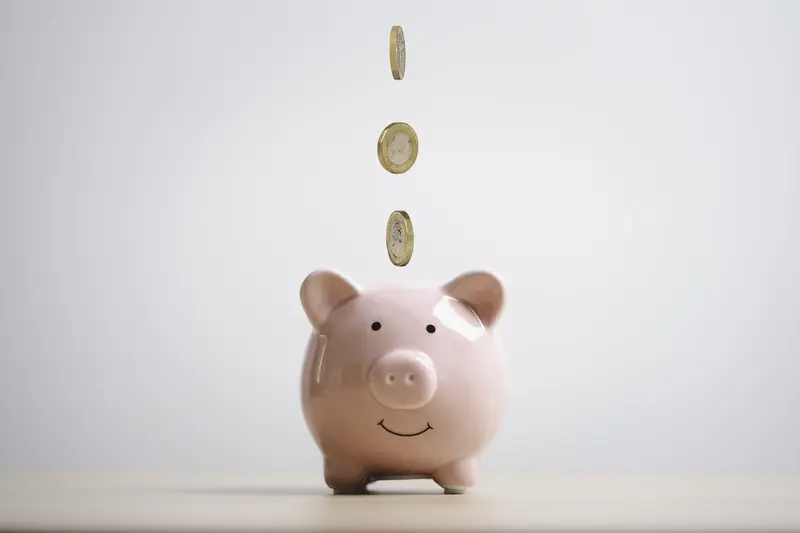What Cognitive Biases Should I Consider In App Design?
Every single day, users make thousands of split-second decisions whilst using their mobile apps—whether to tap that notification, scroll past an ad, or abandon their shopping cart completely. What most people don't realise is that these choices aren't driven by logic or careful consideration. They're shaped by invisible mental shortcuts and biases that our brains have developed over millions of years of evolution.
These cognitive biases affect everything from which app icon we choose to tap on our home screen to whether we trust a new banking app with our personal details. Understanding how the human mind actually works—not how we think it works—can be the difference between building a mobile app that users love and one that gets deleted after a single session.
The best mobile app design doesn't fight against human psychology; it works with it
Design psychology isn't about manipulating users or tricking them into actions they don't want to take. It's about creating experiences that feel natural and intuitive because they align with how our brains are already wired to process information. When we understand user behaviour at this deeper level, we can design mobile apps that genuinely serve people better whilst achieving our business goals at the same time.
The Psychology Behind Every Tap: Understanding How Our Minds Shape Mobile App Experiences
Every time someone picks up their phone and starts tapping through an app, their brain is making hundreds of tiny decisions without them even realising it. Should I tap this button? Does this screen feel trustworthy? Where do I look first? It's fascinating stuff, really—and after years of building apps, I've learned that the best designers understand these mental shortcuts our brains take.
Our minds are constantly looking for patterns and trying to make sense of what we see. When you open an app, your brain instantly starts categorising information, predicting what might happen next, and deciding whether to keep going or give up. This all happens in milliseconds, which means we don't get long to make a good impression.
Why Your Brain Takes Mental Shortcuts
Think about it—if we had to carefully consider every single decision we make in an app, we'd never get anything done. Our brains have evolved to use what psychologists call cognitive biases; these are mental shortcuts that help us process information quickly. Sometimes these shortcuts work brilliantly, but other times they can lead us astray.
Understanding these biases isn't about manipulating users—it's about working with how people naturally think to create better experiences. When we design apps that align with these mental patterns, everything just feels more intuitive and enjoyable to use.
Common Cognitive Biases That Influence User Decisions in Mobile Apps
Our brains are constantly making shortcuts when we use mobile apps—and these shortcuts can make or break your user experience. After years of working with clients on mobile app design, I've noticed that the most successful apps aren't just pretty; they work with how our minds naturally process information.
The recency bias is huge in mobile design. Users remember the last thing they saw more clearly than anything else, which is why your app's final screen before they close it matters so much. If someone's last interaction was frustrating, that's what sticks with them.
Pattern Recognition and Habit Formation
Then there's the availability heuristic—people judge how likely something is based on how easily they can remember it happening. This means if your app crashes once, users will expect it to crash again, even if you've fixed the problem. Their brain files that memory under "this app is unreliable" and it takes multiple positive experiences to overwrite it.
The bandwagon effect is another interesting one. When users see that lots of other people are doing something in your app, they're more likely to do it too. Think about those "5,000 people viewed this today" messages—they tap into our natural tendency to follow the crowd.
Design your app's loading screens and error messages with cognitive biases in mind. A friendly error message that explains what happened helps reduce the negative impact of the availability heuristic.
Using Confirmation Bias to Create Intuitive App Interfaces
After eight years of building mobile apps, I've learned that fighting against how people's brains work is a losing battle. Confirmation bias—our tendency to look for information that supports what we already believe—is one of the most powerful forces in user behaviour. Smart designers don't try to overcome this bias; they work with it.
Think about it: when someone downloads your app, they already have expectations about how it should work based on other apps they've used. If your banking app puts the transfer button in an unexpected place, users will feel frustrated even if your design is technically better. They're looking for confirmation that your app works the way they expect it to.
Meeting User Expectations
The key is understanding what users expect before they even open your app. Shopping apps should have a basket icon in the top right corner. Navigation should be at the bottom for mobile apps. Settings belong in a gear icon. These aren't arbitrary rules—they're patterns that millions of users have learned to expect.
Building on Familiar Patterns
When you follow established design patterns, you're giving users exactly what their confirmation bias wants to see. They can focus on your app's unique value instead of figuring out how to use basic functions. This doesn't mean your app has to be boring; it just means the fundamental interactions should feel familiar and predictable.
The Power of Social Proof in Mobile App Design
People love following the crowd—it's just human nature. When we see others doing something, we automatically think it must be the right thing to do. This is social proof, and it's one of the most powerful tools in your mobile app design toolkit.
I've watched countless apps succeed or fail based on how well they use social proof. The apps that get it right show users that other people are already engaged and loving the experience. Think about those little notification bubbles that pop up saying "Sarah just completed her workout" or "127 people viewed this product today." These aren't just random messages—they're carefully crafted signals that other real people are actively using the app.
Making Social Proof Work in Your App
The key is making it feel genuine and relevant. User reviews, ratings, and social media shares all work brilliantly when they're displayed at the right moment. When someone's hesitating about making a purchase, showing them that 500 other people bought the same item yesterday can be the gentle push they need.
Social proof works because it removes the fear of making the wrong choice by showing users they're joining something others have already validated
But here's the thing—fake social proof backfires spectacularly. Users can smell inauthentic reviews and manufactured popularity from a mile away. The most effective social proof feels natural and happens at moments when users are genuinely uncertain about their next action.
How Loss Aversion Affects User Engagement and Retention
Loss aversion is one of those psychological quirks that makes us human—we hate losing things more than we enjoy gaining them. In mobile app design, this means users will work harder to keep something they already have than to get something new. I've seen this play out countless times in apps I've worked on, and it's honestly one of the most powerful tools you can use to keep people coming back.
Think about it: when someone has built up a streak, collected badges, or accumulated points in your app, they don't want to lose them. That fear of losing progress is often stronger than the excitement of earning rewards in the first place. Duolingo does this brilliantly with their streak counters—users will open the app daily just to avoid breaking their chain.
Common Loss Aversion Techniques in Apps
- Progress bars that show how close users are to losing a level or status
- Countdown timers on special offers or achievements
- Streak counters that reset if users don't engage
- Points or currency that expire after a certain time
- Premium features that get locked again without continued use
The key is being subtle about it. You don't want to make users feel manipulated or stressed—just gently remind them what they might lose if they don't stay engaged. When done right, loss aversion creates a natural pull that keeps users returning to your app without feeling forced.
Anchoring Effect: Setting the Right First Impressions in Your App
The first thing users see in your mobile app becomes their reference point for everything else—that's the anchoring effect in action. When someone opens your app for the first time, their brain grabs onto that initial piece of information and uses it to judge all future interactions. If your onboarding screen shows a premium price of £50 first, then reveals a discounted price of £30, users feel they're getting a bargain. Show them £30 straight away and they might think it's expensive.
This psychological trick works brilliantly in app design when you understand user behaviour. Dating apps often show you attractive profiles first to set high expectations. Shopping apps display original prices crossed out next to sale prices. Even simple things like showing your app's best features during the welcome tour creates a positive anchor that influences how users perceive lesser features later.
Place your strongest value proposition or most impressive feature on your app's first screen. This creates a positive anchor that makes users more likely to appreciate subsequent features and stick around longer.
The beauty of anchoring lies in its simplicity—you don't need complex design psychology knowledge to use it effectively. Just remember that first impressions in mobile apps aren't just about looking good; they're about setting the mental framework for your entire user experience. Get this right and you'll notice users engaging more positively with your app from day one.
The Paradox of Choice: Why Too Many Options Can Hurt Your Mobile App
I've watched countless app projects fail because designers thought more options meant better user experience—spoiler alert: it doesn't! When users open your app and see twenty different buttons or menu items, their brain basically freezes. This is called the paradox of choice, and it's one of the most damaging cognitive biases affecting mobile apps today.
Think about it: when you walk into a shop with three chocolate bars, you pick one quickly. But when there are fifty options, you might leave empty-handed because choosing feels too overwhelming. Your app works the same way. Users don't want to think hard about what to do next; they want the path forward to be obvious.
The Three-Option Rule
Here's what I tell all my clients: never show more than three main options at once. Instagram doesn't bombard you with fifteen different ways to share a photo—they give you a few clear choices. Netflix doesn't show every single category on your homepage; they curate what you see based on your preferences.
When users have fewer choices, they make decisions faster and feel more confident about them. This leads to better engagement, higher conversion rates, and happier users who actually stick around to use your app again.
Conclusion
After years of working with mobile app design psychology, I can tell you that understanding user behaviour isn't just a nice-to-have—it's what separates successful apps from the ones that get deleted after a few days. The cognitive biases we've explored aren't tricks to manipulate people; they're insights into how our brains naturally work when we're tapping, swiping, and scrolling through our phones.
Think about it this way: when you design with confirmation bias in mind, you're making your app feel familiar and comfortable. When you use social proof, you're helping users feel confident about their choices. Loss aversion keeps people engaged, anchoring sets the right expectations, and managing choice overload prevents that overwhelming feeling that makes people give up.
The best mobile app designers I know don't just create pretty interfaces—they create experiences that feel natural and intuitive. They understand that every decision a user makes is influenced by these psychological patterns, whether we're aware of them or not. By designing with these biases in mind, you're not being manipulative; you're being thoughtful about how real people actually use technology.
Start small with one or two of these concepts, test them with real users, and build from there. Your app will thank you for it.
Share this
Subscribe To Our Learning Centre
You May Also Like
These Related Guides

How Do I Design for One-Handed Phone Use?

How Do Colours Change What People Buy in Your App?



